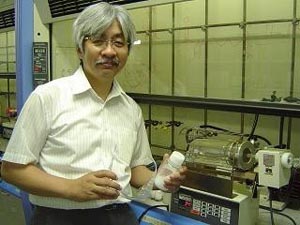As if to show just how diverse the properties and applications of ionic liquids can be, a new era in recycling of plastics is fast approaching thanks to scientists in Japan. The researchers have developed a process based on ionic liquids that can depolymerise plastic materials back into the component monomers from which they were originally made. The team says the method can then be used to convert waste polymers into new high-quality plastics.
The recycling of beverage cans, scrap steel, glass and containers is well established thanks to the ease with which these materials can be simply melted down and reprocessed into new beverage cans and bottles with little loss of quality. However, plastics have until now posed a serious challenge to the recycling industry. There are so many different polymers and once separated there is little that can be done economically with these materials other than shredding them and using them in composite materials. No process existed previously that allows the long chains of polymer molecules to be broken down into their component parts and then re-used to make new plastics.

Akio Kamimura
Now, Akio Kamimura and Shigehiro Yamamoto of the Department of Applied Molecular Bioscience, at Yamaguchi University, Ube, Japan, have turned to the almost universal dissolving power of ionic liquids to help them depolymerise, or breakdown, polymer chains. The approach will allow them to recycle waste polyamide plastics, including nylon and Kevlar, into new high-grade, rather than poor-quality and impure, plastic. The team has demonstrated the depolymerisation of nylon-6 into caprolactam using the ionic liquid PP13 TFSI (N-methyl-N-propylpiperidinium bis(trifluoromethanesulfonyl)imide). The technology is still at the laboratory-scale stage, but the team points out that it does not require pressure chambers, extreme temperatures, or high energy inputs.
This is the first example of the use of ionic liquids for effective depolymerisation of polymeric materials and will open a new field in ionic liquid chemistry as well as plastic recycling, Kamimura says.
Further reading
Org. Lett., 2007, 9, 2533-2535;
http://dx.doi.org/10.1021/ol070886c